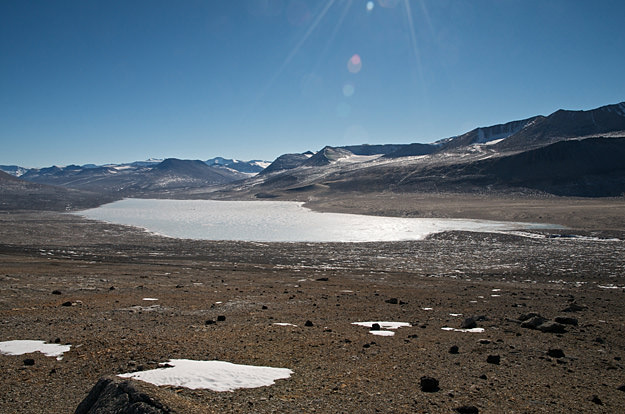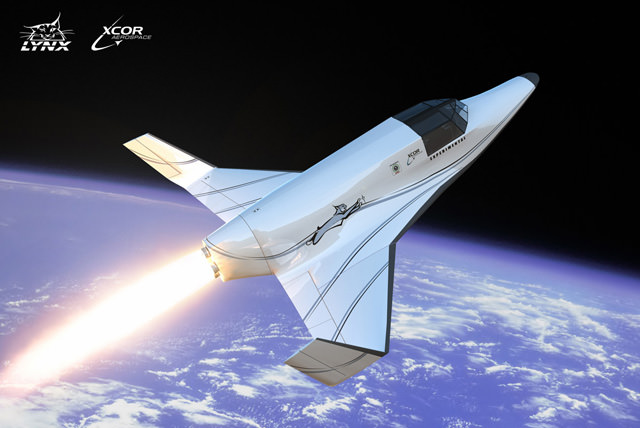Europa is probably the best place in the Solar System to go searching for life. But before they’re launched, any spacecraft we send will need to be squeaky clean so don’t contaminate the place with our filthy Earth bacteria.
Continue reading “Will We Contaminate Europa?”
Why Earth’s Spores Could Survive A Trip to Mars
Here’s a finding to give planetary protectionists pause: two species of spores mounted on the International Space Station’s hull a few years back showed a high survival rate after 18 months in space.
Providing that they are shielded against solar radiation, it appears the spores are quite hardy and could easily transport on a spacecraft headed for Mars — which is concerning since so many scientific investigations there these days are focused on habitability of Martian life (whether past or present). The experiment was published in 2012, but highlighted in a recent NASA press release about planetary protection.
The experiment was called PROTECT (an acronym of Resistance of spacecraft isolates to outer space for planetary protection purposes) and studied spores of Bacillus subtilis 168 and Bacillus pumilus SAFR-032. B. pumilus spores were found in an air lock between a “clean room” and entrance floor at NASA’s Jet Propulsion Laboratory, and in previous studies were shown to be more resistant to UV radiation and hydrogen peroxide than “wild” strains. B. subtilis is a spore that has been studied in other space environment experiments.
Samples of both spores were mounted on the EXPOSE-E facility on the space station, which provides up to two years of space exposure. The major goal of this European Space Agency experiment is to study “the origin, evolution and distribution of life in the universe,” NASA states, adding that anything mounted outside of there has to survive “cosmic radiation, vacuum, full-spectrum solar light including UV-C, freezing/thawing cycles [and] microgravity.”
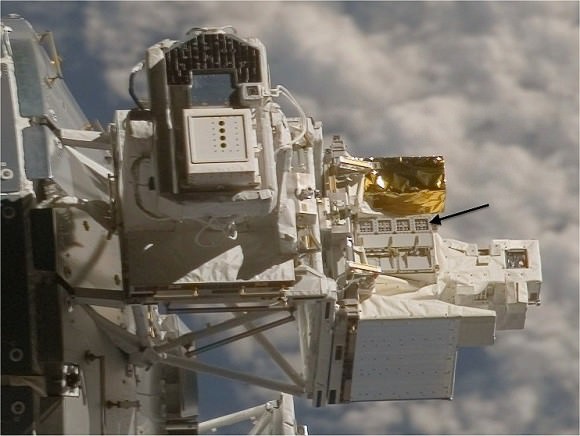
The experiment found that if the spores were in areas replete with solar UV radiation, most of them were killed. If those rays were filtered out, however, the spores showed a 50 percent survival rate on both space and simulated “Mars” conditions. It is most concerning to scientists when considering a situation where spores could be hiding underneath each other during a spacecraft trip. The ones on the outside would likely die, but the ones on the inside — shielded from solar radiation — could make it there.
One key limitation in this study, however, is that only two types of spores were studied. This does present a case for doing more studies on this matter in the future, however. Space agencies are quite aware of the problem of planetary protection, as evidenced by departments such as NASA’s Office of Planetary Protection and ESA’s Planetary Protection Officer.
Spacecraft designers constantly make decisions to keep the extraterrestrial bodies we study as safe from Earth contamination as possible; one famous example was when the Galileo probe was deliberately sent into Jupiter in 2003 to protect Europa and other potentially life-bearing moons of the giant planet from possible contamination.
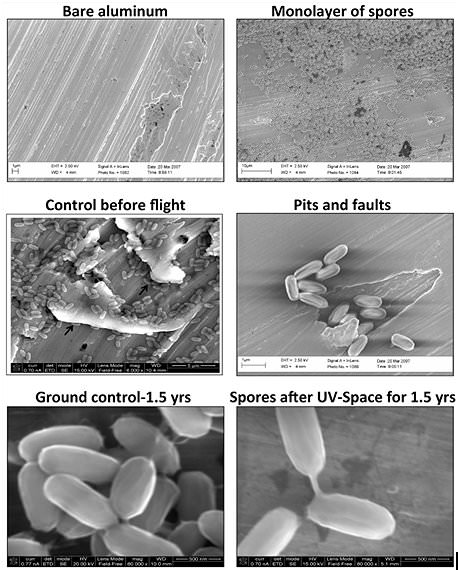
You can read the entire study (led by DLR’s Gerda Horneck) in Astrobiology. Also note that there are two other EXPOSE-E studies published around the same time: “Survival of Rock-Colonizing Organisms After 1.5 Years in Outer Space” and “Survival of Bacillus pumilus Spores for a Prolonged Period of Time in Real Space Conditions.”
The rock study (led by Tuscia University’s Silvano Onofri) takes the question of the spores in a different direction, which is examining the phenomenon of “lithopanspermia” — how organisms might move between planets (say, on a meteor). Since Mars meteorites have been found on Earth, some researchers have wondered if life could have spread between our two planets. If that were to happen, the researchers cautioned, the spores would have to survive for thousands or millions of years.
The other B. pumilus paper (led by NASA’s Parag A. Vaishampayan) noted that those spores mounted outside of the space station that survived, showed higher concentrations of proteins that could be linked to resisting UV radiation.
In an Isolated, Ice-Covered Antarctic Lake Far Below Freezing, Life is Found
Lake Vida lies within one of Antarctica’s cold, arid McMurdo Dry Valleys (Photo: Desert Research Institute)
Even inside an almost completely frozen lake within Antarctica’s inland dry valleys, in dark, salt-laden and sub-freezing water full of nitrous oxide, life thrives… offering a clue at what might one day be found in similar environments elsewhere in the Solar System.
Researchers from NASA, the Desert Research Institute in Nevada, the University of Illinois at Chicago and nine other institutions have discovered colonies of bacteria living in one of the most isolated places on Earth: Antarctica’s Lake Vida, located in Victoria Valley — one of the southern continent’s incredibly arid McMurdo Dry Valleys.
These organisms seem to be thriving despite the harsh conditions. Covered by 20 meters (65 feet) of ice, the water in Lake Vida is six times saltier than seawater and contains the highest levels of nitrous oxide ever found in a natural body of water. Sunlight doesn’t penetrate very far below the frozen surface, and due to the hypersaline conditions and pressure of the ice water temperatures can plunge to a frigid -13.5 ºC (8 ºF).
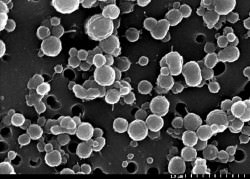 Yet even within such a seemingly inhospitable environment Lake Vida is host to a “surprisingly diverse and abundant assemblage of bacteria” existing within water channels branching through the ice, separated from the sun’s energy and isolated from exterior influences for an estimated 3,000 years.
Yet even within such a seemingly inhospitable environment Lake Vida is host to a “surprisingly diverse and abundant assemblage of bacteria” existing within water channels branching through the ice, separated from the sun’s energy and isolated from exterior influences for an estimated 3,000 years.
Originally thought to be frozen solid, ground penetrating radar surveys in 1995 revealed a very salty liquid layer (a brine) underlying the lake’s year-round 20-meter-thick ice cover.
“This study provides a window into one of the most unique ecosystems on Earth,” said Dr. Alison Murray, one of the lead authors of the team’s paper, a molecular microbial ecologist and polar researcher and a member of 14 expeditions to the Southern Ocean and Antarctic continent. “Our knowledge of geochemical and microbial processes in lightless icy environments, especially at subzero temperatures, has been mostly unknown up until now. This work expands our understanding of the types of life that can survive in these isolated, cryoecosystems and how different strategies may be used to exist in such challenging environments.”
Sterile environments had to be set up within tents on Lake Vida’s surface so the researchers could be sure that the core samples they were drilling were pristine, and weren’t being contaminated with any introduced organisms.
According to a NASA press release, “geochemical analyses suggest chemical reactions between the brine and the underlying iron-rich sediments generate nitrous oxide and molecular hydrogen. The latter, in part, may provide the energy needed to support the brine’s diverse microbial life.”
“This system is probably the best analog we have for possible ecosystems in the subsurface waters of Saturn’s moon Enceladus and Jupiter’s moon Europa.”
– Chris McKay, co-author, NASA’s Ames Research Center
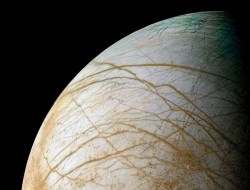 What’s particularly exciting is the similarity between conditions found in ice-covered Antarctic lakes and those that could be found on other worlds in our Solar System. If life could survive in Lake Vida, as harsh and isolated as it is, could it also be found beneath the icy surface of Europa, or within the (hypothesized) subsurface oceans of Enceladus? And what about the ice caps of Mars? Might there be similar channels of super-salty liquid water running through Mars’ ice, with microbes eking out an existence on iron sediments?
What’s particularly exciting is the similarity between conditions found in ice-covered Antarctic lakes and those that could be found on other worlds in our Solar System. If life could survive in Lake Vida, as harsh and isolated as it is, could it also be found beneath the icy surface of Europa, or within the (hypothesized) subsurface oceans of Enceladus? And what about the ice caps of Mars? Might there be similar channels of super-salty liquid water running through Mars’ ice, with microbes eking out an existence on iron sediments?
“It’s plausible that a life-supporting energy source exists solely from the chemical reaction between anoxic salt water and the rock,” explained Dr. Christian Fritsen, a systems microbial ecologist and Research Professor in DRI’s Division of Earth and Ecosystem Sciences and co-author of the study.
“If that’s the case,” Murray added, “this gives us an entirely new framework for thinking of how life can be supported in cryoecosystems on earth and in other icy worlds of the universe.”
Read more: Europa’s Hidden Great Lakes May Harbor Life
More research is planned to study the chemical interactions between the sediment and the brine as well as the genetic makeup of the microbial communities themselves.
The research was published this week in the Proceedings of the National Academy of Science (PNAS). Read more on the DRI press release here, and watch a video below showing highlights from the field research.
Funding for the research was supported jointly by NSF and NASA. Images courtesy the Desert Research Institute. Dry valley image credit: NASA/Landsat. Europa image: NASA/Ted Stryk.)
On The Hunt For High-Altitude Microorganisms
[/caption]
The United States Rocket Academy has announced an open call for entries in its High Altitude Astrobiology Challenge, a citizen science project that will attempt to collect samples of microbes that may be lurking in Earth’s atmosphere at the edge of space.
Earth’s biosphere has been discovered to extend much higher than once thought — up to 100,000 feet (30,480 meters) above the planet’s surface. Any microorganisms present at these high altitudes could be subject to the mutating effects of increased radiation and transported around the globe in a sort of pathogenic jet-stream.
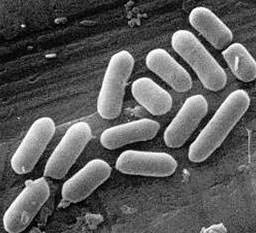
Citizens in Space, a project run by the U.S. Rocket Academy, is offering a $10,000 prize for the development of an open-source and replicable collection device that could successfully retrieve samples of high-altitude microorganisms, and could fly as a payload aboard an XCOR Lynx spacecraft.
XCOR Aerospace is a private California-based company that has developed the Lynx, a reusable launch vehicle that has suborbital flight capabilities. Low-speed test flights are expected to commence later this year, with incremental testing to take place over the following months.
Any proposed microbe collection devices would have to fit within the parameters of the Lynx’s 2kg Aft Cowling Port payload capabilities — preferably a 10 x 10 x 20 cm CubeSat volume — and provide solutions for either its retraction (in the case of extended components) or retrieval (in the case of ejected hardware.)
The contest is open to any US resident or non-government team or organization, and submissions are due by February 13, 2013. The chosen design will fly on 10 contracted Lynx flights in late 2013 or early 2014, and possibly even future missions.
Find out more about the challenge on the Citizens in Space site here, and check out an animation of the XCOR Lynx spacecraft below:



